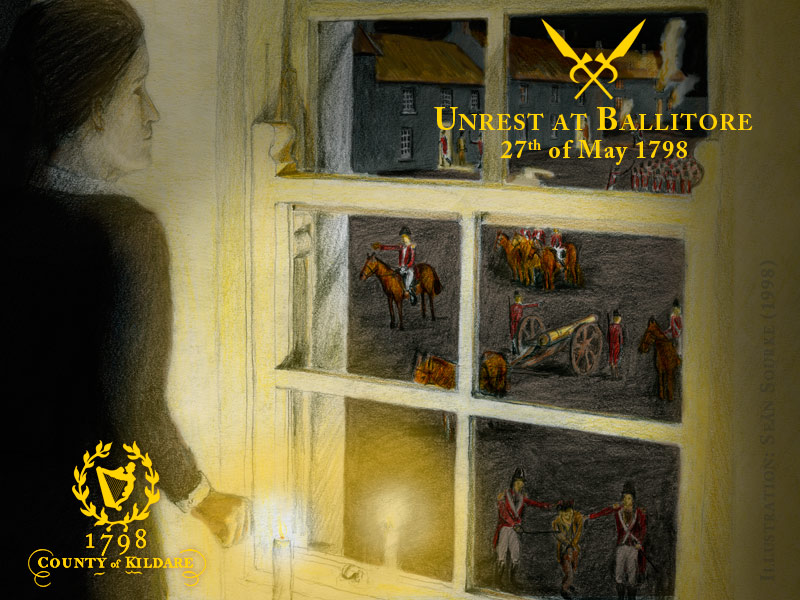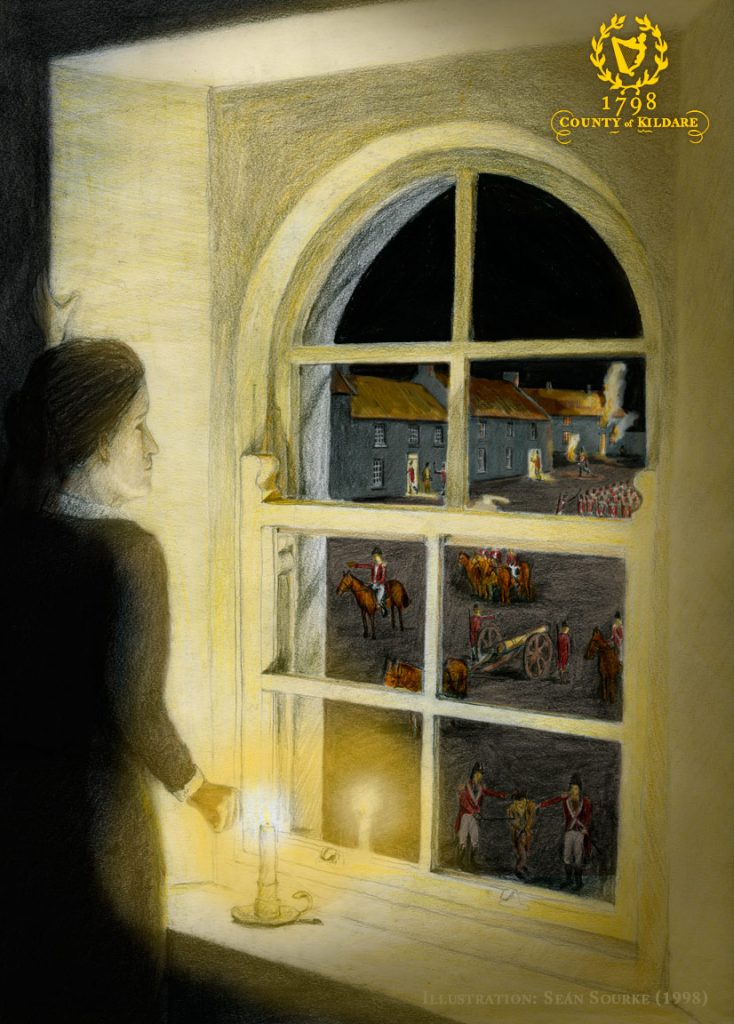Rebellion Towns & Villages

Ballitore
Sometime after 8 a.m. on the morning of the 24th May, the Suffolk Fencibles marched out of the town leaving 9 men to secure the baggage. Lieutenant Eadie and 23 privates of the Tyrone Militia marched to join their company at Calverstown. An attempted ambush was thwarted and a party of rebels routed in the woods near Narraghmore.

Around 3.00 p.m. rebels appeared on the bridge, but were turned back by Dr. Johnson. A little later, some 300 rebels, led by Malachi Delaney (on a white horse), occupied the town. Some of the Suffolk Fencibles left to protect the baggage were killed.
Richard Yeates, a young yeomanry lieutenant was tragically killed as the rebels fortified Ballitore. The Quakers were unharmed. The rebels began to consider their position and Abraham Shackleton mediated with Colonel Campbell in Athy, to allow them to surrender in return for protection. Campbell lost patience as the rebels delayed and marched his troops out of Athy around midnight on Saturday the 26th of May. Around 3 o’ clock in the morning, (Sunday 27th) intelligence reached the town that the troops were approaching – the rebels fled.
The retribution of the troops was severe – suspects were shot and hanged, even Dr. Johnson. Having made an example of the town, the troops returned to Athy.
Most of the rebels from Ballitore eventually surrendered to Colonel Campbell at Ballindrum, near the Moat of Ardscull on Wednesday the 30th of May.
While the United Irish Movement was broken, the spirit of disaffection remained in Narraghmore and Ballitore for the rest of the year

Rebellion Towns & Villages
Naas | Ballymore | Old Kilcullen | Knockaulin | Narraghmore | Ballitore | Athy | Monasterevin | Kildare Town | Rathangan | Gibbet Rath | Clane | Prosperous | Timahoe | Ovidstown | Surrender
